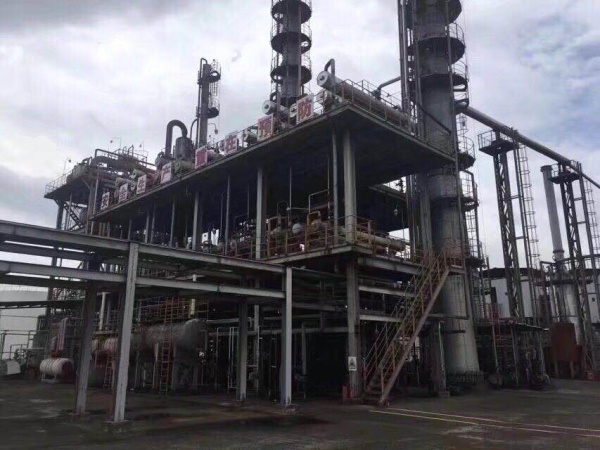2018Non-hydrogen dewaxing process and device

Email: zsm-5@zsm-5.cc
Wax oil non-hydrocatalytic production of low-freezing point base oil and gasoline and diesel equipment. Most of the crude oil in my country is paraffin-based. The hydrocarbon content of paraffin wax in petroleum products is relatively high, especially in petroleum products with heavier distillates. Many waxes and high freezing points affect the use of products. Since the beginning of 1980, the Academy of Petrochemical Sciences has started the research work on the non-hydrogen pour point depressing process. It uses catalytic diesel as the main raw material and has achieved good results. It is a newly developed process technology. The process can selectively crack the wax component in heavy diesel oil under normal pressure and without using hydrogen to reduce the freezing point, so it has the characteristics of simple process, low investment and high efficiency. The characteristics of non-hydrogen condensation depressing technology The practice of non-hydrogen condensation depressing technology in the past few years has shown that it has many characteristics and advantages and is welcomed by users.
1. The non-hydrogen condensation reduction process is simple, the operation is convenient, and the construction investment is low. The non-hydrogen condensation reduction (including gas-associated process) raw materials are heated to a certain temperature by the heating furnace and enter (or accompanied by liquefied gas) fixed bed reactor (one Or two), the reaction product directly enters the fractionation tower to obtain gasoline and diesel components. The gas is compressed to produce part of liquefied gas and fuel gas. The reaction pressure is normal pressure, and there are no special requirements for equipment.
2. Non-hydrogen condensation reduction has ideal product distribution and good product properties. The light oil yield of industrial non-hydrogen condensation reduction devices is 77, and the light oil yield with gas condensation reduction is about 95%. Moreover, the diesel-to-steam ratio is high, generally 1.9^-2.3, which is much higher than the diesel-to-steam ratio of catalytic cracking (about 0.5). In particular, it needs to be pointed out that the amount of coke is extremely low, only a few parts per 100,000, which can be ignored. Therefore, more than 98% of the products obtained by condensation reduction can be used as commodities. The octane number of non-hydrogen pour point depressing gasoline (MON, the same below) is 79^-80, and some of the associated gas depressing pour point gasoline is as high as 82, which is a valuable high-octane component. That is, it has a higher blending octane number. Pour point depressant diesel also has a higher cetane number, with a melting point of 10-20 units, which is a better diesel blending component. There is very little dry gas in the gas, mainly C3 C4 components, accounting for more than 97%; and C3 C4 is mainly composed of olefins, accounting for about 60% ^-70}, which can be used as petrochemical raw materials.
3. Non-nitrogen depressing has higher economic benefits. Pour point depressing has satisfactory product distribution and excellent product properties, and the pour point depressing raw material is a low-value heavy diesel component, which will naturally have better economic benefits. The application prospects of non-hydrogen pour point depressing technology Most crude oils in my country have high wax content, and the pour point depressing process has a wide range of application prospects.
The following feasible application schemes are now proposed.
1. Combination of pour point depressing and catalytic cracking
1) Catalytic cracking and non-hydrogen pour point depressing do not compete with each other for raw materials, they can complement each other, and each has its own merits. Pour point reduction is suitable for the treatment of lighter gas oil, such as normal third line, reduced-line and catalytically cracked heavy diesel oil. These raw materials are more difficult to crack in the catalytic cracking unit; catalytic cracking can process heavier vacuum gas oil. In this way, catalytic cracking can reduce the cycle ratio. Hit big processing power.
2) The catalytic cracking product contains more gasoline and less diesel; while the pour point depressant product contains more diesel and less gasoline. The combination of the two devices can adjust the diesel/steam ratio within a certain range.
3) Since the properties of the two process products are similar, they can form a combined device to share the absorption stabilization system and the gas compression system. If the pour point depressant raw material is the normal third-line or reduced-line oil, the fractionation system can also be shared, that is, the pour point depressant product can be directly introduced Separation system for catalytic cracking. This will further simplify the device composition, save investment and reduce energy consumption.
Our services: Our professional team will provide you with a full solution for the production of low-freezing point base oil and gasoline and diesel equipment with 1-1 million tons of wax oil non-hydrocatalytic production. Turnkey project from design to installation to commissioning
